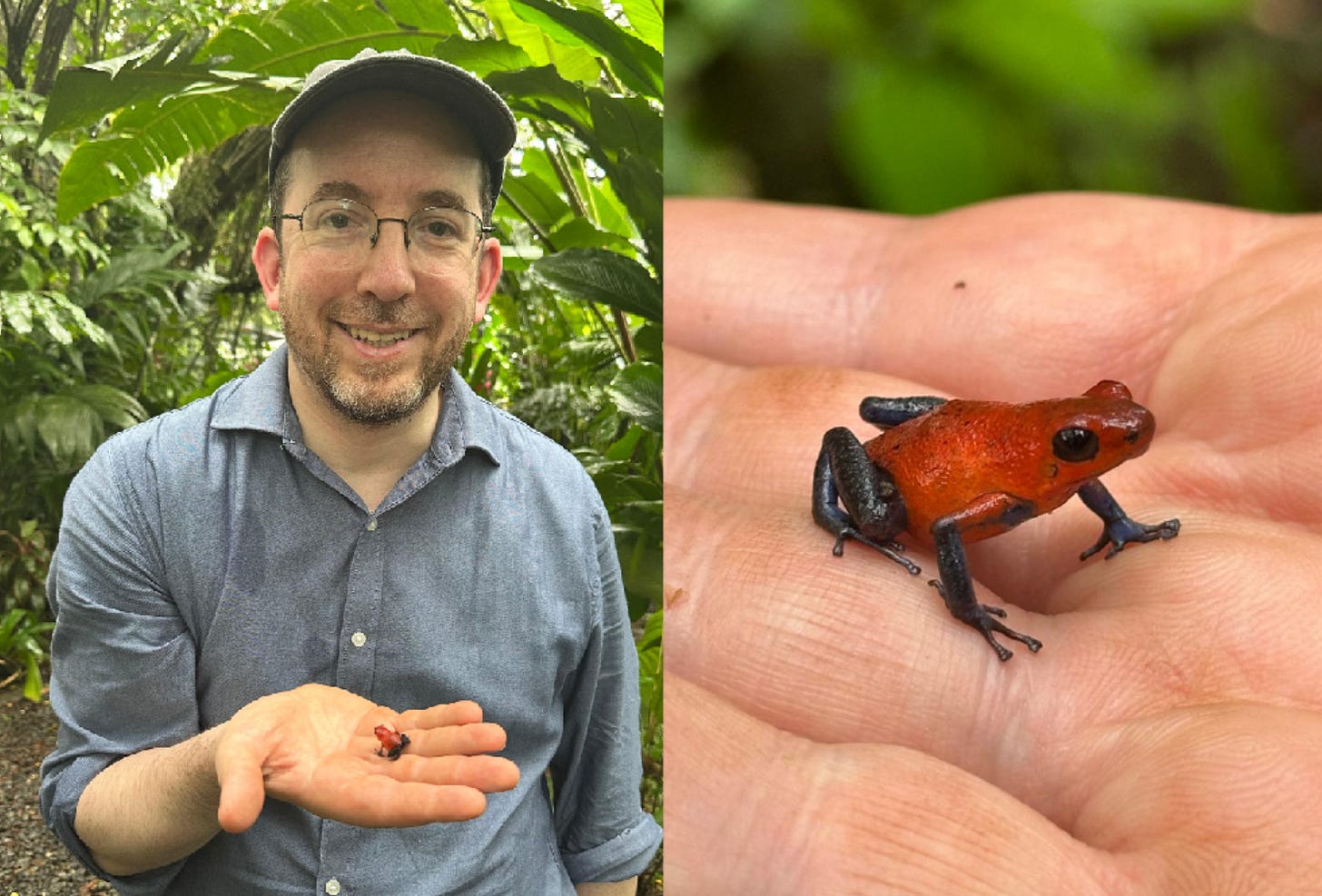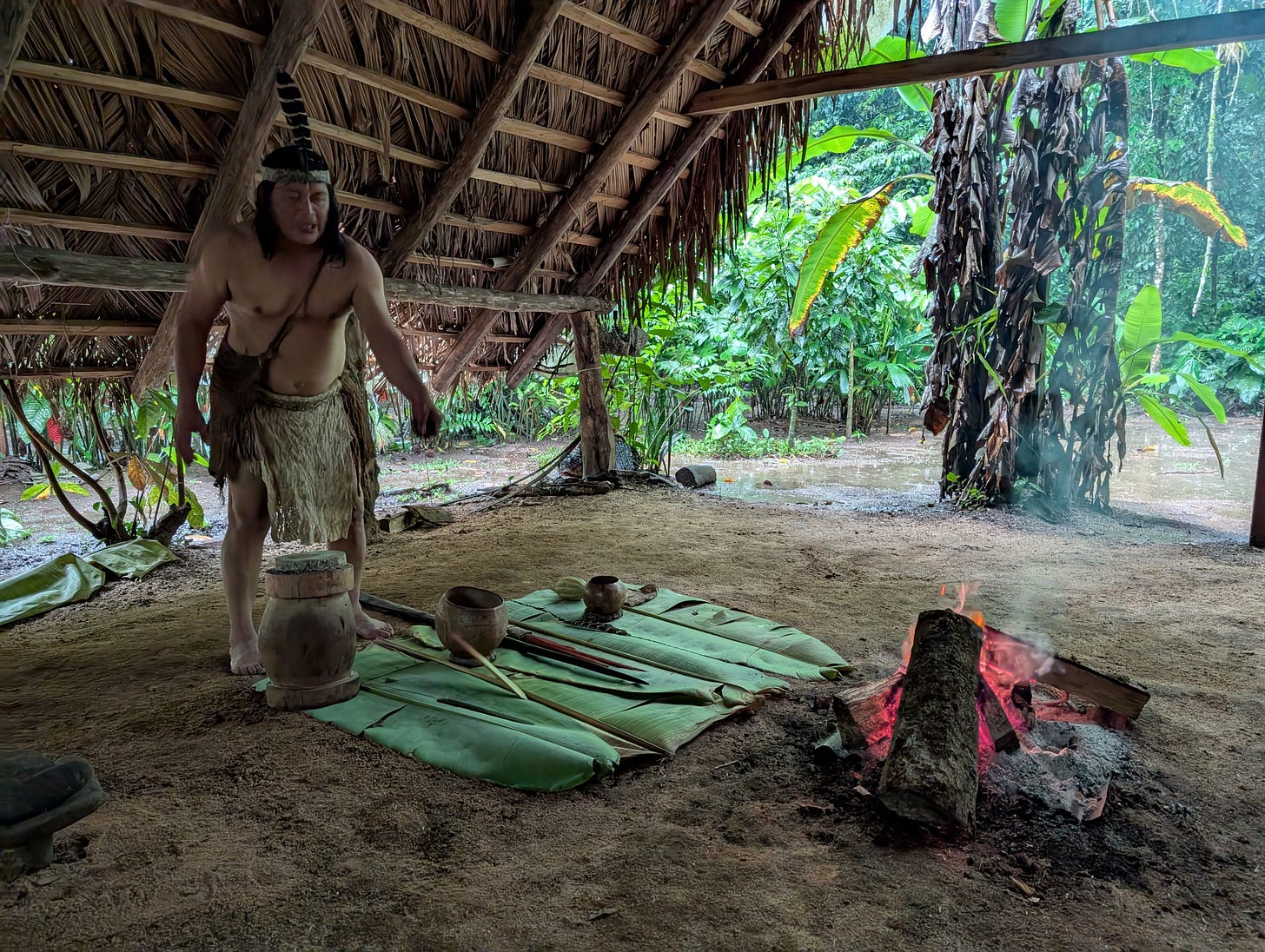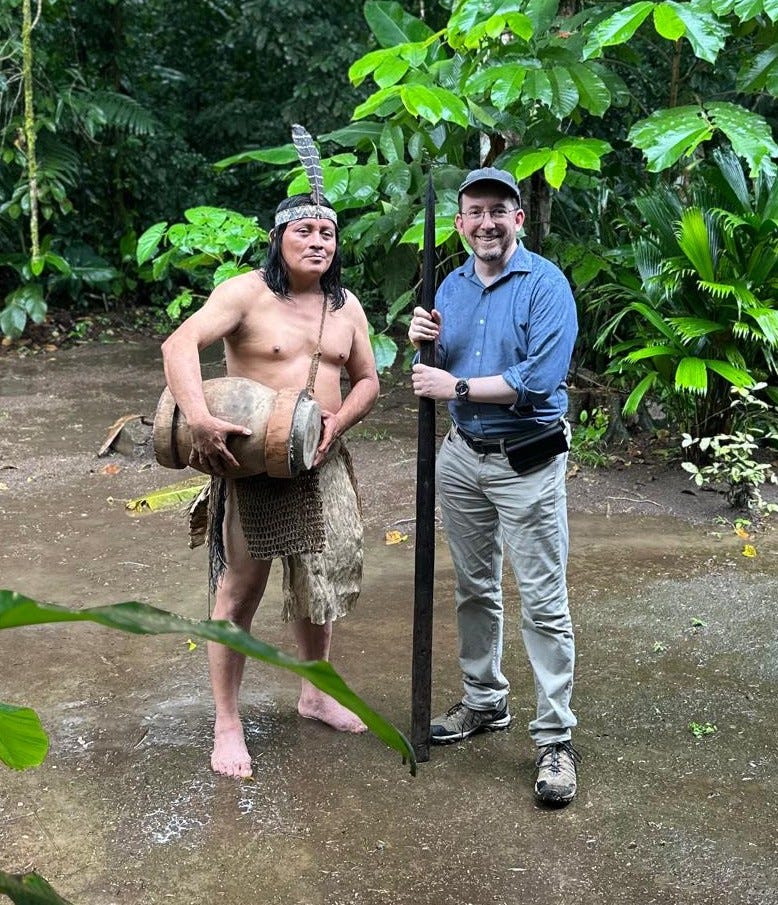Meeting the Maleku
An Indigenous Adventure in the Jungle
This week I was combining business with pleasure - celebrating my 50th birthday with a trip to Costa Rica, but also using the opportunity for recording various videos for the Biblical Museum of Natural History, along with acquiring some wonderful artifacts for exhibit. I saw many fascinating animals and plants, including sloths, kinkajous, toucans, basilisks, enormous tarantulas, and poison-arrow frogs (don’t worry, I washed my hands very carefully afterwards).
Yet the highlight of my trip was meeting certain human beings - the Indigenous Maleku tribe. Since a large part of my new book The Lions of Zion deals with the topic of indigeneity, especially as it relates to the role of animals and plants in different cultures, I arranged a trip to meet this tribe.
In the 21st century, it’s very difficult to meet authentic ancient indigenous peoples - those whose entire culture developed in that land, who have not intermarried with others, and who are relatively untouched by modern civilization. In Zambia you’ll see “African natives” wearing animal skins and performing for money, but the “animal skins” are artificial fabric printed with the pattern of a tiger(!). Many years ago I met the Masai in Kenya, living in huts made of dried animal dung, and I saw them bleed a cow to drink. But I did not succeed in finding any “authentic” Aboriginals in Australia.
The Maleku are about as close to the real thing as you can get today. As best as can be assessed, their culture developed around ten thousand years ago (and if you’re wondering how it continued through the Deluge, see this post). There were originally several thousand of them in the highland jungles of Costa Rica, and they were not reached by Europeans until just over 150 years ago. This was because it was difficult to get there, with all the challenging terrain and venomous snakes and frogs.
At the beginning of the 19th century, there were thousands of Maleku. Then there were massacres by invaders from Nicaragua, and Europeans brought tubercelosis. Today, there are just 600 Maleku left, making them the smallest tribe in the Americas.
We met a small Maleku family who told us about their religious beliefs; they have an intricate creation mythology, with various gods, but oddly they have no special days on their calendar. They showed us their way of life, demonsrating how they make medicines and utensils and art from various plants and trees. They even performed a mock marriage ceremony for us, wearing traditional Maleku clothing.
However, this is not how they dress normally; they now wear fully modern clothing. And when I asked the translator to ask the Maleku tribesman - who went by the rather untraditional name of “Jimmy” - whether he owned a smartphone, the answer was yes. We also visited his traditional Maleku open log “house,” inside of which he had installed a modern tent to keep the bugs out. Clearly, Jimmy was Modern Maleku.
Not being one to beat about the bush, I asked him straight out whether they were happy that the Europeans came. Jimmy said that the elders were very unhappy, but his generation accepts it and appreciates the modern benefits.
Of course my main interest was to find out the role that animals play in Maleku culture. There are various birds and mammals which have symbolic significance for them, but Jimmy also showed me a traditional drum (pictured below). The covering of the drum was made from the skin of an iguana, which was probably frustrating to the iguana because iguanas need their skin to keep their insides in. But this iguana’s insides were also put to use - being a delicacy, they were presented to the village elders as a special meal.
There were two especially fascinating things that I learned. I asked Jimmy if any species of insects were part of the Maleku diet (as is very common in Asia, and as is represented in Judaism with kosher locusts). Jimmy responded he had once asked the elders if this had ever been done, and they laughed. They said, “Why would we eat insects, when there are so many animals in the forest?” Worldwide, insects are generally eaten when necessary as a source of protein - which, for Jews in ancient Israel, would only have been the case when there are locusts, which cause famine.
But the most fascinating thing I learned was about chickens.
Keep reading with a 7-day free trial
Subscribe to Rationalist Judaism to keep reading this post and get 7 days of free access to the full post archives.





